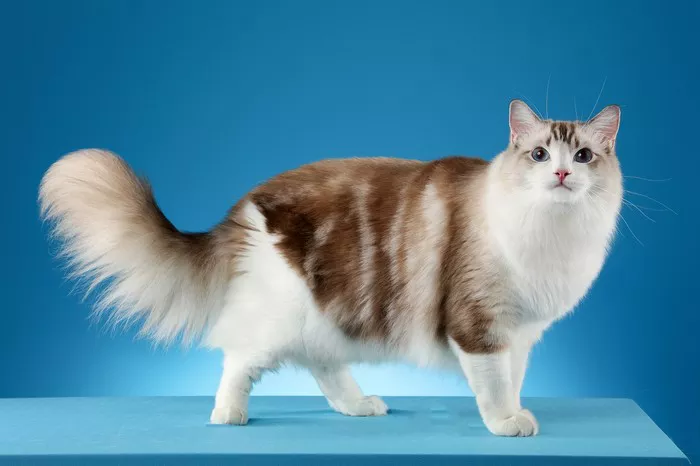Cats are known for their charming and sometimes perplexing behaviors, and one of the most common feline habits is scratching. If you’ve ever wondered why your cat seems to have an insatiable urge to scratch everything in sight, you’re not alone. In this article, we’ll delve into the world of cat scratching, exploring the reasons behind this behavior and how to manage it effectively.
Understanding the Instinct to Scratch
Scratching is a natural and instinctive behavior in cats, deeply rooted in their biology and behavior. To comprehend why cats scratch, it’s essential to consider the following factors:
Territorial Marking: Cats have scent glands in their paw pads, and when they scratch, they leave behind scent markings. This serves as a way for cats to mark their territory and communicate with other cats. By scratching, cats are essentially saying, “This is my space.”
Stretching and Strengthening: Scratching allows cats to stretch their muscles and flex their paws and claws. It helps them maintain limberness and physical health. The act of scratching also helps cats shed the outer sheath of their claws, keeping them sharp.
Stress Relief: Scratching can be a way for cats to relieve stress and anxiety. The repetitive motion of scratching can have a calming effect on cats, helping them relax.
Visual and Auditory Marking: In addition to scent marking, scratching leaves visual and auditory cues. The visual marks serve as a warning to other cats that the territory is already claimed, while the sound of scratching can act as an audible deterrent to potential intruders.
Communication: Cats may scratch as a way of communicating with their owners. If your cat scratches near you or an object you’re using, they may be trying to get your attention or signal a desire for interaction.
Maintenance of Claws: Scratching helps cats maintain their claws. It helps remove the outer layer of the claw, which can become dull and frayed over time. This exposes the sharp, fresh claw underneath.
The Importance of Providing Scratching Opportunities
While scratching is a natural behavior, it’s crucial to provide your cat with appropriate outlets for this instinct. Here are some reasons why providing scratching opportunities is essential:
Protecting Furniture and Belongings: If cats don’t have designated scratching surfaces, they may turn to furniture, carpets, or other household items. Providing scratching posts and pads can redirect their behavior away from your belongings.
Physical Health: Scratching helps cats maintain their physical health by stretching and strengthening their muscles. It’s particularly important for indoor cats who may have limited opportunities for exercise and movement.
Emotional Well-Being: Scratching serves as a stress-relief mechanism for cats. By offering scratching options, you help promote their emotional well-being and reduce potential anxiety.
Bonding: Sharing positive interactions with your cat around their scratching posts can strengthen your bond. You can use toys and treats to encourage them to explore and use their designated scratching surfaces.
Choosing the Right Scratching Surfaces
Not all scratching surfaces are created equal, and cats can have preferences for specific materials and textures. Here are some options to consider when choosing scratching surfaces for your cat:
Scratching Posts: Vertical scratching posts are a popular choice and allow cats to stretch and scratch upward. Look for posts that are sturdy and tall enough to accommodate your cat’s full reach.
Horizontal Scratching Pads: Some cats prefer to scratch horizontally. These pads are typically made of cardboard or sisal and are placed on the floor or low surfaces.
Cat Trees: Cat trees are multi-level structures that often include scratching posts, perches, and hideaways. They offer a variety of activities and opportunities for scratching.
Sisal Mats: Sisal mats and rugs provide a textured surface that many cats find appealing for scratching. These can be placed on the floor or hung on walls.
Cardboard Scratchers: Cardboard scratchers are affordable and disposable options that many cats enjoy. They often come in various shapes, including flat pads and inclined ramps.
Natural Wood: Some cats enjoy scratching on natural wood surfaces. You can create DIY scratching surfaces using untreated wood or purchase pre-made wooden cat scratchers.
Texture Variety: Cats have individual preferences, so offering a variety of textures and materials can help cater to their scratching needs.
Training Your Cat to Use Scratching Surfaces
Encouraging your cat to use designated scratching surfaces may require some training and positive reinforcement. Here’s how to help your cat develop good scratching habits:
Placement: Position scratching posts and surfaces in areas where your cat spends time, such as near their favorite resting spots or near windows with a view.
Positive Reinforcement: When your cat uses the designated scratching surface, offer praise, treats, or affection as a reward. Use positive reinforcement consistently to reinforce the behavior.
Deter Unwanted Scratching: If your cat starts scratching furniture or other inappropriate surfaces, gently redirect them to the designated scratching area. You can also use deterrents like double-sided tape or commercial sprays on furniture to make it less appealing.
Keep Surfaces Appealing: Keep scratching surfaces clean and well-maintained. Cats may be less inclined to use dirty or damaged scratching posts.
Variety: Experiment with different types of scratching surfaces to determine your cat’s preferences. Some cats may prefer vertical posts, while others prefer horizontal pads.
Catnip: Sprinkle a bit of catnip on the scratching surface to attract your cat’s attention and make it more appealing.
Patience: Be patient and consistent in your training efforts. It may take some time for your cat to develop the habit of using designated scratching surfaces exclusively.
Trimming Your Cat’s Claws
In addition to providing scratching surfaces, regular claw maintenance is important. Trimming your cat’s claws can help prevent them from becoming overly sharp and causing damage. Here are some tips for safely trimming your cat’s claws:
Use Appropriate Clippers: Invest in high-quality cat nail clippers designed for this purpose. Avoid using human nail clippers, as they can crush the claw.
Gentle Handling: Handle your cat’s paws gently and positively to get them used to the sensation.
Identify the Quick: Be careful not to cut into the quick, the pink part of the claw that contains blood vessels and nerves. Trim only the sharp, translucent tip of the claw.
Take Your Time: If your cat is not comfortable with claw trimming, start slowly and trim a few claws at a time. Offer treats and praise as a reward for cooperation.
Seek Professional Help: If you’re unsure about trimming your cat’s claws or your cat is resistant, consider consulting a veterinarian or professional groomer for assistance.
Conclusion
Cat scratching is a natural and instinctive behavior, but it can be managed effectively by providing appropriate scratching surfaces and encouraging good scratching habits. Understanding the reasons behind your cat’s scratching and addressing their needs can help protect your furniture, promote their physical and emotional well-being, and strengthen your bond with your feline companion. With patience and positive reinforcement, you can create a harmonious environment where both you and your cat can coexist happily.




















